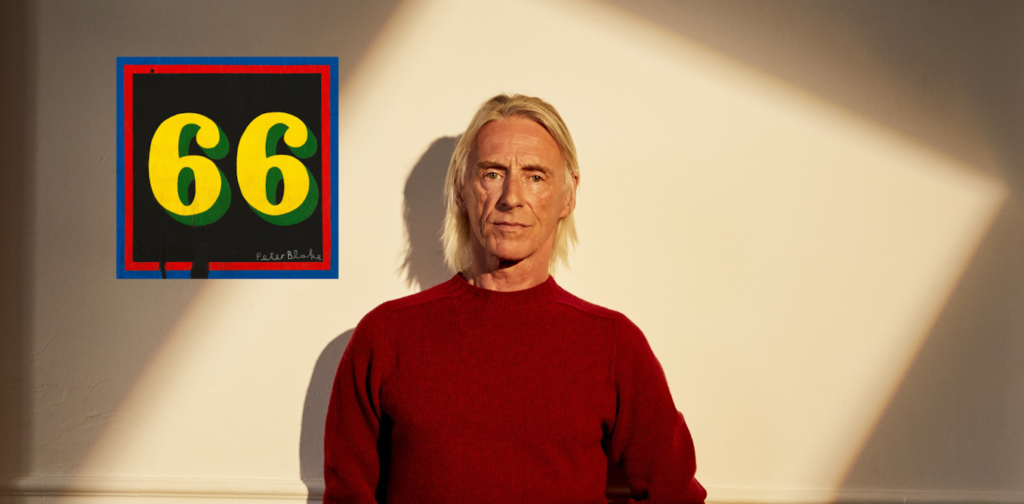Paul Weller’s new album 66 is a a ways cry from the fiery vigour of Weller’s early paintings with The Jam and The Taste Council. It’s additionally other from solo hits like The Changingman (1995) and even, extra lately, the grittier moments on 2021’s Fats Pop. However through taking his foot off the fuel relatively, Weller turns out prepared to absorb the view and a comparative loss of feistiness doesn’t imply a loss of goal.
Certainly, this being his seventeenth solo studio album – following six with The Jam and 5 with The Taste Council – Weller’s paintings ethic, a minimum of, presentations no indicators of flagging. Nor his capability to roam round pop’s previous and provide on the lookout for inspiration.
66 is called partially for his age at liberate and partially, he claims, for 1966 – the 12 months that produced a lot of the track that fired him up within the first position.
The mid-Nineteen Sixties have lengthy been a musical touchstone for Weller. When writing Get started (1982), The Jam have been taking note of The Beatles’ Revolver album and the affect of songs like Taxman is obvious. Weller is understood for channelling the power and bile of The Who’s opening bankruptcy and the soul-inspired mod motion – it wasn’t for not anything that Weller obtained “The Modfather” as a nickname.
There are for sure nods to that period right here, no longer least within the album quilt through pop artist Sir Peter Blake, whose paintings graced releases through The Who and, maximum famously The Beatles’ Sgt Pepper’s Lonely Hearts Membership Band. However whilst the soul track inflections that color a lot of his paintings are nonetheless provide, 66 usually unearths Weller in a extra ruminative temper.
Insofar as he attracts from the Nineteen Sixties and 70s aurally, it’s the extra melodic and narrative, moderately than rebellious and declarative, strands of the ones eras’ musical historical past. The lilting, transferring chord patterns of A Glimpse of You name Burt Bacharach to thoughts. Whilst the fingerpicked acoustic guitar of Sleepy Hole carries sunglasses of tragic troubadour Nick Drake.
As enticing as all that is, the glimpses of a more difficult edge are a welcome exchange of tempo. The Rolling Stones-esque horns (from their Exile on Major Side road-era pomp) on Jumble Queen, with lyrics through Noel Gallagher, and the extra riff-driven unmarried Soul Wandering, a collaboration with Primal Scream frontman Bobby Gillespie, upload a marginally of chunk. Nonetheless, those are outliers.
It’s conceivable to believe them as staples of a reside display, however the extra attention-grabbing components listed here are in one of the extra indirect moments – the loping waltz of My Perfect Pal’s Coat and the drifting album-closer Burn Out, as an example.
With its lengthy guitar slides, this latter music carries sturdy echoes of Crimson Floyd of their exploratory segment, ahead of the gargantuan luck of Darkish Aspect of the Moon locked their sound right into a template. There’s even a nod to Floyd’s Echoes (1971) phase approach via, intentionally or differently.
Weller has all the time worn his influences on his sleeve. What is helping him keep away from being simply by-product is each the volume of influences and his facility for synthesising doubtlessly disparate assets. And so it’s right here.
With meandering flutes, autumnal strings, uneven, disco guitar chords and stuttering synths swirled in combination, the manufacturing is busy, however no longer cluttered. The danger of this manner is that it lacks uniqueness, and will waft in opposition to extra.
Weller most commonly, regardless that, avoids seeming as though he’s thrown the whole thing on the wall to peer what sticks. Rock is an growing older artwork shape, and his willingness to tug its more than a few threads in combination yields texture, moderately than untidiness. The album infrequently pushes the bounds of the style, however the collaborative manner foregrounds Weller’s ability as an arranger and interpreter. Whilst he leans at the previous, as he reaches a pensionable age, he doesn’t seem keen to be a hostage to it.
Regardless of his monitor file, he shies clear of the “heritage” label and leaning into nostalgia through retreading his hits – one thing he says has price him lovers prior to now. There were no reunion excursions or albums for The Jam or Taste Council, and he has eschewed the sector presentations that artists of his antique may just no doubt lift.
This turns out to have paid off – he’s had a primary album in each and every decade because the Eighties. Whether or not 66 will repeat the trick is difficult to mention. It’s possibly not going to garner him any new lovers, but it bears repeated listening and can praise those that have caught with him up to now.


